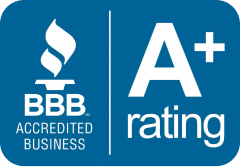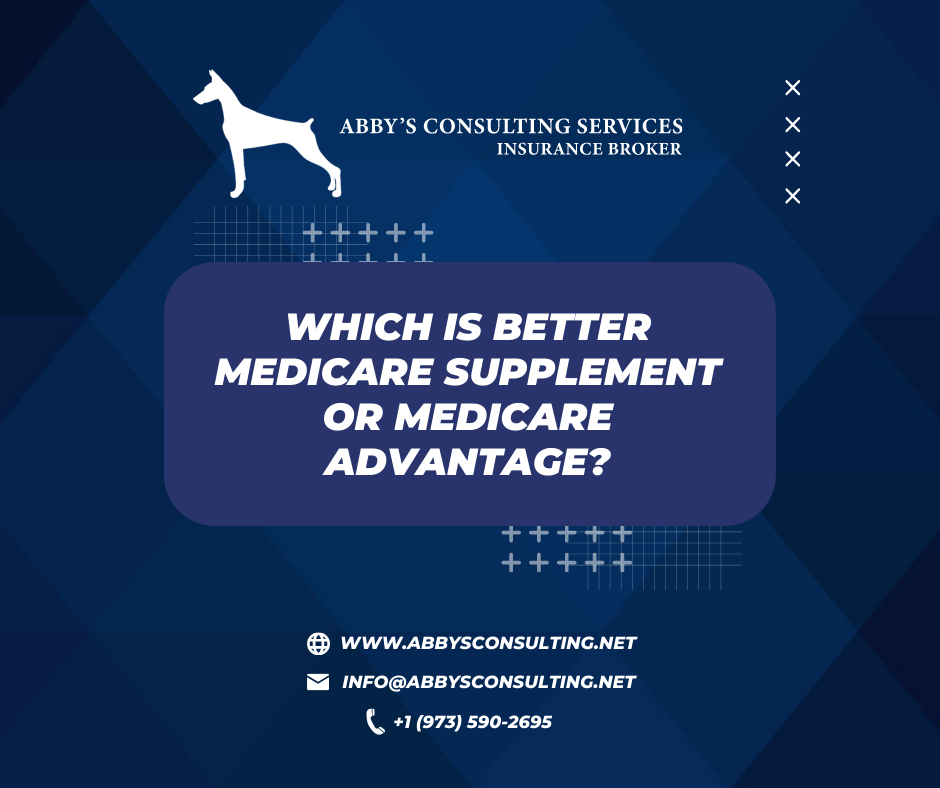Medicare, the Federal Health Insurance Program for Seniors, pays medical bills on a fee-for-service basis. It features a plethora of moving pieces that provide various degrees of protection and advantages. However, there are problems with Medicare, such as numerous gaps in coverage. Get a Medicare Advantage or Medicare Supplement plan to fill in the gaps.
We’ve compiled unbiased expert insights and research on coverage, cost, convenience, and choice to help you make an educated decision and weigh the pros and cons of each option.
What Is the Difference Between Medicare Advantage and Medicare Supplement?
Understanding the differences between Medicare Advantage and Medicare Supplement plans and selecting the right one for your specific health care needs can be challenging. Here are some things to think about as you weigh the advantages of various options.
| MEDICARE ADVANTAGE VS. MEDICARE SUPPLEMENT: WHICH IS RIGHT FOR YOU? | |
|---|---|
|
|
Types of Medicare Health Plans
“People in Medicare are either in Original Medicare, fee-for-service Medicare, or a Medicare Advantage plan,” explains Gretchen Jacobson, Ph.D., vice president of Medicare at The Commonwealth Fund, a foundation that funds independent research on health care issues and provides grants to improve health care practise and policy.
For most services, you’ll have to pay a co-payment or deductible out of pocket even if they’re covered by Original Medicare. Furthermore, unless you have other coverage such as a Medicare Supplement, Medicaid, employee, or union coverage, or enrol in a Medicare Advantage plan, there is no limit to what you may pay in a year, as stated in the official Medicare handbook for 2022 published by the United States government.
What Is Medicare Advantage?
Private insurance companies offer Medicare Advantage plans, also known as Medicare Part C, which are designed to replace Original Medicare. In addition to the standard Medicare benefits, some of these plans may also include coverage for things like dental, hearing, and vision care, as well as wellness programmes. Coverage for medicines is provided by Part D, which is included in most plans.
According to Jacobson, “Medicare Advantage limits your access to a wider network of healthcare providers and may require you to obtain additional authorizations before receiving treatment.” When compared to Original Medicare, “the big trade-off is that private insurers have the ability to manage your use of care in different ways.”
More than 30 Medicare Advantage plans are available to Medicare recipients, including health maintenance organisations (HMOs), preferred provider organisations (PPOs), private fee-for-service (PFFS) plans, and special needs plans (SNPs). Even though you may have a plethora of options to consider, keep in mind that not all coverage types are offered in every area.
Who Qualifies for Medicare Advantage?
Medicare Advantage is typically accessible to:
- Seniors age 65 or older
- Younger people with disabilities
- People with end-stage renal disease (permanent kidney failure requiring dialysis or transplant)
To qualify for Medicare Advantage, you must live in the plan’s service area and have both Medicare Part A and Part B.
Insurance companies cannot refuse to cover preexisting conditions, but enrollment windows are limited. Here are the three time periods in which you can enrol in or switch to a Medicare Advantage plan with or without prescription drug coverage:
- Initial Medicare Enrollment Period: The period beginning three months prior to your 65th birthday and ending three months after your 65th birthday.
- Open Enrollment Period: From Oct. 15 to Dec. 7
- Medicare Advantage Open Enrollment Period: Jan. 1 to March 31 annually
What Are the Benefits of Medicare Advantage?
Medicare Advantage plans include all the benefits of Original Medicare plus coverage for wellness programmes like gym memberships, some vision care, some dental care, and some hearing aids.
Amanda Baethke, director of corporate development at Aeroflow Healthcare in North Carolina, says that among the newly available supplementary benefits is transportation to and from medical appointments and adult day care centres. Those with preexisting conditions can also receive benefits from a well-designed plan.
For instance, Cigna now provides free transportation to and from the COVID-19 vaccination clinic for its Medicare Advantage members. More than half a million customers (and their carers) in 23 states are eligible for four round-trip rides of up to 60 miles each way to get vaccinated.
Expansion of protection is an additional advantage. The number of Medicare Advantage plans that provide Special Supplemental Benefits for the Chronically Ill (SSBCI) increased from 245 in 2020 to 845 in 2021, per a new report commissioned by the Better Medicare Alliance. Among the most notable additional perks that aren’t health-related are:
- Meals
- Non-medical transportation
- Resources addressing social needs
- Pest control
“In his opinion, “Medicare Advantage plans overall offer convenient coverage options that are largely covered by a single insurer,” as Baethke put it. And there’s a big chance to cut expenses, too.”
How Much Does a Medicare Advantage Plan Cost?
You should look into your options, as many Medicare Advantage plans have no monthly premiums. According to Baethke, “if you enrol in a plan that does charge a premium, you must pay that fee every month in addition to your Medicare Part B premium, which is around $165 [or higher, depending on your income].”
Your Medicare Advantage copay for most services and products, such as glucose monitors, walkers, hospital beds, and more, is typically 20% of the Medicare-approved amount once you’ve met your Part B deductible and coinsurance of $226.
Many people get into financial trouble when they use a doctor or hospital that is not part of their plan’s network or when they purchase items from a vendor who is not Medicare-approved.
“Patients often have an immediate need for this medical equipment and aren’t thinking about reading the fine print,” says Baethke. For this reason, familiarity with Medicare’s DME requirements is crucial.
For instance, nebulizers are a type of DME frequently used to treat conditions that cause difficulty breathing, like asthma and COVID-19. Medicare requires you to purchase a medical device from a Medicare-approved vendor if your doctor prescribes one. The Medicare Advantage insurance company may reject your claim if you don’t, leaving you with a hefty out-of-pocket expense.
Please contact the plan directly or visit Medicare.gov/plan-compare for information on specific Medicare Advantage plan costs.
What Is Medicare Supplement (Medigap)?
In order to fill the gaps in coverage left by Original Medicare, private insurance companies offer Medicare Supplement plans, also known as Medigap policies.
According to a report by the Kaiser Family Foundation in 2018, around 11 million people (or 34% of all Medicare enrollees) relied on Medicare Supplement plans to help pay for some of the costs associated with Medicare-approved services.
There are ten different Medigap plans available, designated by letters A through N, that offer consistent coverage for things like deductibles, coinsurance, and copayments. There is no coverage for prescription drugs under a Medigap policy; instead, you must enrol in a Medicare Part D plan.
Who Is Eligible for a Medicare Supplement Plan?
If you’re turning 65:
Medicare enrollees have a window of opportunity every six months to educate themselves on the programme, its benefits, and their coverage choices.
Medicare Part B eligibility period begins on the first day of the month in which the Medicare beneficiary is 65 or older. In the case of someone who turns 65 in July and enrols in Part B that same month, the optimal time to purchase a Medigap policy would be between July and December.
According to Jacobson, “it’s the only time you’re guaranteed to get a Medigap policy without medical underwriting.” Therefore, it is in your best interest to sign up for health insurance as soon as possible, as no provider can turn you down on the basis of a preexisting condition.
If you’re 65 or older:
You should know that there is no guarantee that an insurance company will sell you a policy if you apply for Medigap coverage outside of the open enrollment period. Specifically, insurers may :
- Request your medical history as part of the conditions of issuing you a plan
- Refuse to sell you a policy
- Make you wait for coverage to start
- Charge you more
If you are under 65:
Insurance companies are not required by federal law to offer Medigap coverage to individuals under the age of 65. However, under the law in some states, insurance providers are obligated to offer policies to those under 65, with varying requirements for eligibility.
What Are the Benefits of a Medicare Supplement Plan?
The costs you’ll have to pay out of pocket will be easier to predict and account for when you have a Medicare Supplement plan.
“From a cost-sharing standpoint,” explained Jacobson, “many people like it because you don’t need to worry about how much is owed every time you go to the doctor or are hospitalised.” “You can see any doctor in the country, anywhere you want.” If you happen to be a resident of Arizona and are interested in visiting the Mayo Clinic in Rochester, Minnesota, you can do so by taking a short flight.
Jacobson laments that, in general, people place a higher value on this perk when they are sicker. “Most people who enrol in Medicare are still in good health and don’t give much thought to what kind of coverage they’ll need if they become ill or injured. Medicare is already confusing enough without the inability to switch between Medicare Advantage and Medicare Supplement, as she points out.
If you enrol in a Medicare Advantage plan for the first time and aren’t satisfied with the coverage, you have the option of switching back to Original Medicare within the first 12 months of your enrollment. After that, you won’t be able to leave your current plan or switch to a different one unless it’s the Open Enrollment Period or another designated time of year. You may be eligible to purchase a Medigap policy during a Special Enrollment Period, but this is not always the case.
Contact the office of your state’s health insurance assistance programme if you’re thinking about dropping your Medicare Advantage coverage and signing up for a Medigap policy instead.
The ultimate determining factor is usually financial, as Medigap plans tend to be more expensive.
Medigap With Nontraditional Benefits: Vision, Dental and Hearing
The CommonWealth Fund has just released an analysis of Medigap plans that include benefits that aren’t included in Original Medicare, such as vision, dental, and hearing care[3]. According to Jacobson’s findings, “only 7% of plans offer these benefits.” “Most people probably don’t know there are plans available with benefits similar to Medicare Advantage,” one expert said.
There are costs and benefits associated with federal policies that promote or discourage the provision of such benefits. As an example, the American Dental Association is currently lobbying for a separate programme to provide comprehensive dental care for low-income older adults, rather than the Medicare Part B programme, which has been included in past and current proposals.
In order to protect the rights of low-income older adults, the advocacy organisation Justice in Aging needs “comprehensive oral health coverage in Medicare,” according to Amber Christ, the organization’s directing attorney. About 24 million seniors and people with disabilities enrolled in Medicare have no access to dental care because of a lack of coverage.
What Is the Average Cost of Medicare Supplement Insurance?
Monthly premiums (what you pay) for Medicare Supplement plans can vary from around $150 to around $200, on average, depending on where you live and which insurance company you choose.
Medicare Supplement Plan G enrollees aged 65 and older can save an average of $840 per year, and Plan N enrollees aged 65 and older can save an average of $648 per year, based on a price comparison analysis by eHealth, Inc.
With the help of private plans and Medicare, “we continue looking at how they can be more efficient, effective, and equitable for people,” says Jacobson. This is a case where the numbers tell a compelling tale. Medicare’s disparities are consistently lower than those of any other insurance program.








